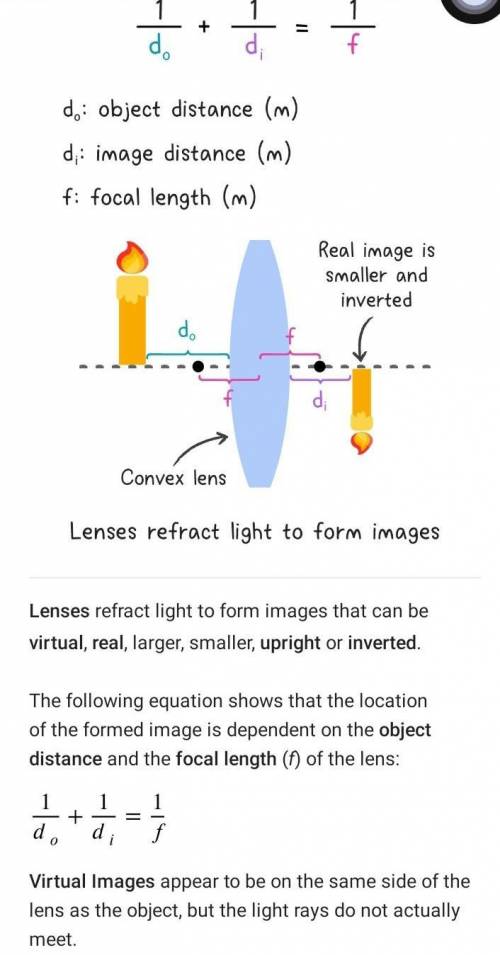A lens with a focal length of 35cm
is used to form an image of an
object. When this lens is...

Physics, 14.02.2022 05:20 20copstevens
A lens with a focal length of 35cm
is used to form an image of an
object. When this lens is placed a
certain distance X from the object,
no image is formed. Give this
distance X in cm.

Answers: 3
Another question on Physics

Physics, 21.06.2019 16:20
A1,200 kg car is accelerated at 3.7 m/s2. what force was needed to produce this acceleration? a. 4,440 n b. 324.3 n c. 4,388 n d. 304.3 n
Answers: 2

Physics, 22.06.2019 07:30
30 points - when can a theory be modified if a new type of technology allows for new observations that raise new questions? a. immediately, while the questions about the theory are being asked b. after new hypotheses related to the theory are tested in experiments c. only after the new observations disprove all parts of the theory d. while scientists begin to think about how the theory could improve
Answers: 1

Physics, 22.06.2019 16:30
In the nineteenth century, gregor mendel first determined some basic rules of genetics that have been observed throughout all types of life. no observations have disproved these basic rules of genetics. charles darwin developed the idea of biological evolution around the same time, but he was unaware of mendel’s discoveries in genetics. over a century later, darwin’s idea of evolution was modified in order to incorporate mendel’s rules of genetics along with the other evidence that darwin had used. what is most likely the relationship between mendel’s rules of genetics and darwin’s idea of biological evolution? a.)mendel’s genetics states laws that are now part of the theory of biological evolution.b.)biological evolution states laws that are part of mendel’s theory of genetics.c.)mendel’s genetics replaced darwin’s entire concept of biological evolution.d.)biological evolution is a law that explains why all genetics exist.
Answers: 1

Physics, 22.06.2019 16:30
Place several e-field sensors at a few points on different equipotential lines, and look at the relationship between the electric field and the equipotential lines. which statement is true? 1-at any point, the electric field is perpendicular to the equipotential line at that point, and it is directed toward lines of higher voltages. 2-at any point, the electric field is perpendicular to the equipotential line at that point, and it is directed toward lines of lower voltages. 3-at any point, the electric field is parallel to the equipotential line at that point.
Answers: 1
You know the right answer?
Questions

Mathematics, 23.06.2019 23:10

English, 23.06.2019 23:10


Biology, 23.06.2019 23:10

English, 23.06.2019 23:10

Mathematics, 23.06.2019 23:10


Mathematics, 23.06.2019 23:10

Biology, 23.06.2019 23:10

Biology, 23.06.2019 23:10


History, 23.06.2019 23:10


English, 23.06.2019 23:10

Mathematics, 23.06.2019 23:10

Mathematics, 23.06.2019 23:10



Mathematics, 23.06.2019 23:10

Mathematics, 23.06.2019 23:10




